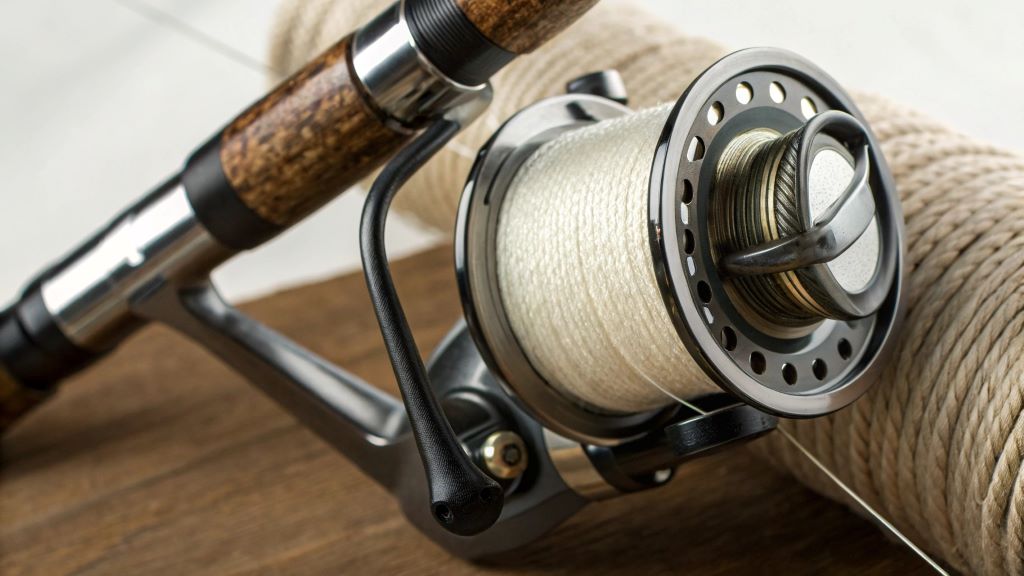Nothing frustrates a fishing trip faster than tangled braid line. One minute you’re casting smoothly, the next you’re wrestling with a snarled mess called a wind knot. These knots don’t just ruin your rhythm—they waste time, damage your line, and sometimes cost you fish. To avoid these issues, it’s helpful to learn proven ways to fix braid on spinning reels , ensuring your line stays tangle-free and ready for action.
Whether you’re a weekend warrior or seasoned pro, wind knots can sneak up and ruin your day on the water. While some anglers accept them as part of using braid, the truth is, wind knots are preventable. With the right techniques, you can reduce or eliminate them entirely.
When I first started using braided line, I had to cut and re-tie at least three times per outing. I almost gave up on braid. But after making a few simple changes, those messy tangles stopped. In this post, I’ll share what actually works.
And if you’re looking to upgrade your reel or line, it’s a great time to explore Fishing Gear Shops for quality, angler-approved tools that help you stay knot-free.
Let’s dive in and fix those braid problems for good.
Understanding Wind Knots and Why They Happen
Wind knots form when loose coils of braided line wrap over themselves during a cast or retrieval. Unlike monofilament, braid is slick and can slip through the guides too fast, especially if not spooled properly or if tension is lost during retrieval.
Common causes of wind knots include:
- Overfilling the spool
- Casting into the wind with loose loops on the reel
- Incorrect rod or reel setup
- Slack line hitting the water before the bait
In a study by Berkley Fishing, nearly 60% of anglers using braid reported wind knots as their top issue. What’s more, over 75% of them admitted they didn’t know the actual cause—let alone the fix.
Most wind knots come from small issues that build up: a loop here, a loose wrap there. Over time, your line becomes primed for tangles.
To use gear ratio for bass fishing, the right setup is essential.
Step-by-Step Fix: How to Stop Wind Knots Before They Start
Fixing wind knots begins with prevention. The best way to deal with them is to avoid them in the first place.
Here’s what works:
1. Don’t Overfill Your Spool
Leave a small gap—about 1/8 inch—between the line and the edge of the spool. Too much line creates loops that jump off during casting.
Pro Tip: Fill your spool to 85-90% full. It maximizes casting distance while preventing the line from spilling.
2. Use a Quality Braid with Low Memory
Cheap braid flattens and loops easily. Use a round, tight-woven braid for better spool memory and reduced friction.
Recommended: PowerPro, Sufix 832, and SpiderWire Stealth.
3. Close the Bail by Hand
Every time you cast, close the bail manually. Don’t let the reel do it for you.
This avoids loose loops, which are the main cause of wind knots.
4. Apply Steady Pressure on Retrieval
Reel in with constant, firm tension. If you feel slack, stop and fix it.
Loose wraps settle unevenly on the spool and come off messy on the next cast.
5. Avoid Casting Directly Into the Wind
Wind adds extra resistance and twists to your line.
Try changing angles slightly or using heavier lures to punch through gusts.
Reel and Line Maintenance: Your Anti-Knot Insurance
Routine maintenance is your long-term fix. Think of it as insurance for smoother casting and fewer tangles.
Here’s what to check regularly:
- Line twist: Unspool your line behind a moving boat or while walking, letting it untwist.
- Reel drag and spool tension: Keep both adjusted. A loose drag causes line slippage and slack.
- Line conditioner: Spray it on the spool before fishing. It helps line flow off smoothly and reduces friction.
Additional Tip: If you’re cutting knots frequently, check your guides. Cracked or damaged inserts can grab the line and create tension shifts.
According to a test by TackleTour, 1 out of 5 spinning rods had micro fractures in guides that went unnoticed, directly contributing to line fray and knots.
So next time you’re untangling braid, check the reel and rod too. You might find the real culprit there.
Proven Wind Knot Fixes on the Water
Despite all efforts, wind knots still happen. The key is to fix them quickly and smartly.
Here’s how to handle them on the spot:
- Do not pull tight. A wind knot can often be undone if the loops are loose.
- Pinch the knot base, then slowly pull the outer loops.
- Work from the outside in. Use a hook point or safety pin if needed.
- Reel up slack after clearing. Resume fishing with tighter tension.
If the knot won’t budge, cut only the minimum line needed to restore function.
From my own experience, patience wins here. Rushing usually tightens the knot or snaps the line altogether.
Spooling Braid Correctly: Set Up for Success
Spooling your reel right is the first—and most important—step in avoiding wind knots. Many anglers skip this or do it poorly.
How to do it right:
- Use backing: Start with 20–30 yards of mono before tying on braid. It prevents slippage.
- Use a line winder or buddy: Keep firm pressure during spooling. Loose line lays poorly.
- Alternate spool direction: Every 50 yards, reverse your reel turns to avoid memory build-up.
- Avoid spooling wet braid: It loosens over time and settles oddly once dry.
A 2021 study by Salt Strong showed that anglers who used proper spooling methods had 80% fewer wind knots across 20 fishing trips. That’s a massive difference for such a simple adjustment.
How One Day Changed My Braid Game
Years ago, I was on a weekend fishing trip to the coast. The target: redfish on topwater lures. My spinning reel was spooled with fresh braid, and I was ready to hit the flats.
Within the first hour, I had three casts end in a tangled mess. My buddy laughed, saying I was “feeding the fish spaghetti.” I almost quit. But I decided to re-spool the line, add backing, and close the bail by hand for the rest of the day.
The change was instant. Every cast after that was smooth. I caught two solid reds before lunch.
That trip taught me that small habits—like how you spool and cast—make the biggest difference.
Upgrade Your Setup: The Right Gear Helps
If you’re still getting regular knots after following all the advice, it may be time to rethink your gear.
Look for these features:
- Spinning reels with braid-ready spools
- Line rollers with anti-twist designs
- Rods with large, smooth guides for better line flow
Combining quality gear with correct techniques cuts wind knots dramatically. Take time to match your rod, reel, and line weight. Mismatched setups often create stress points where line twists build up.
Conclusion
Wind knots are annoying, but they’re not unbeatable. With the right habits, good equipment, and a little patience, you can fish tangle-free.
Remember these key takeaways:
- Don’t overfill your spool.
- Always close the bail by hand.
- Use backing and maintain steady retrieval tension.
- Avoid casting into strong wind.
- Keep your reel and guides in good shape.
If I can go from knots every 15 minutes to smooth casts all day, so can you. Make these small changes and enjoy your time on the water.
Now it’s your turn—what’s been your worst wind knot experience? Drop it in the comments below. And don’t forget to share this with your fishing buddies—save them the headache too.
Bamboo Paper vs. Traditional Paper: A Comprehensive Review for Eco-Conscious Consumers
FAQs
What is a wind knot in fishing?
A wind knot is a tangle in braided fishing line, caused by loose loops that overlap during casting.
Can wind knots damage your fishing line?
Yes. Repeated wind knots weaken braid fibers and may cause line breakage under tension.
Is braid more prone to wind knots than mono?
Yes. Braid is slick and thin, making it more likely to loop and tangle if misused.
How do I untangle a wind knot fast?
Loosen the knot gently, start from the outside, and never pull tight. Use a hook or pin for small loops.
Does reel type affect wind knots?
Yes. A spinning reel with a smooth bail system and anti-twist line roller reduces the risk of wind knots.
Read More:




